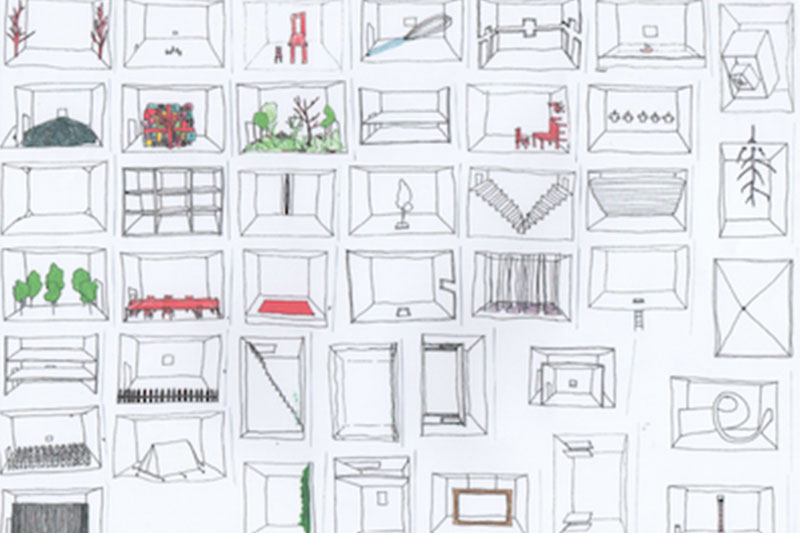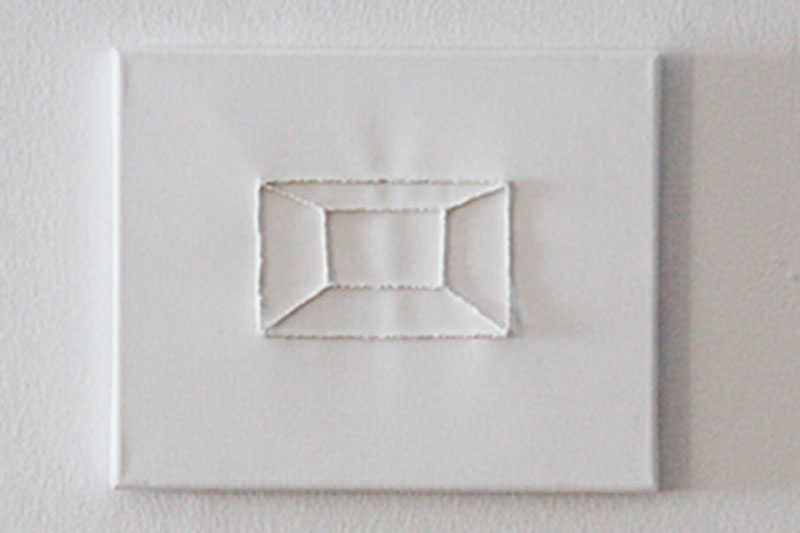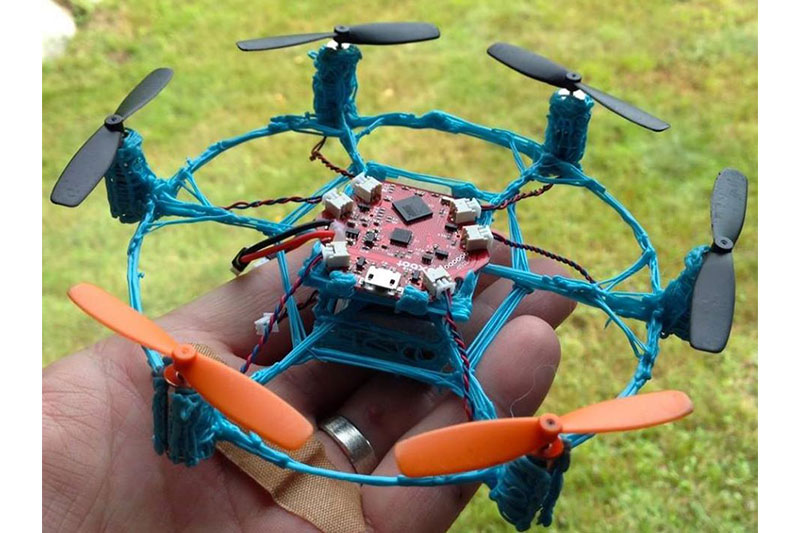“In my artistic work I am primarily concerned with the question of space,” explains design undergraduate Oktavia.
For Oktavia, the concept of “space” is at once familiar and nebulous. What she really wanted to focus on was how to create a clearer definition. “Is our environment created only with our perceptions in mind,” she asks in her undergraduate thesis, “or does it exist independently of us?”
“In my work I am looking for ways to visualize spatial ideas and create a wide range of works on this topic,” she explains. “Materiality and abstraction play just as important a role as variety and spontaneity do.”

When looking to expand on this concept and delve deeper for her thesis, Oktavia looked for new tools to help demonstrate her line of thinking. “When dealing with space, which is generally defined as consisting of at least 3 dimensions, the question arises, where do the limits between 2 and 3 dimensions lie?” she says. “Through this specific question, I came across the 3Doodler as a futuristic tool that could help me further.”

Unlike other more precise drafting or modeling tools, Oktavia was drawn to the imperfect nature of Doodling. “I determined relatively quickly that it was not always possible to draw with exact precision with the 3Doodler,” she explains. “But that’s exactly what makes the objects created with the 3Doodler so exciting. The small elements of coincidence make the difference. So I deliberately tried not to be the best technical Doodler, but to let myself be guided by the characteristics of the tool, making those elements the focus of my thesis.”

As she experimented, she found the 3Doodler was able to add structure and variation to her concept in a way no other tool had. “Because the lines of the plastic thread seem uncertain, the 3rd dimension works to ‘dreamify’ the space-filled graphics,” she says. “The jump between drawing on the wall or canvas and drawing in space creates something fantastical and offers the viewer the opportunity to dream about further dimensional jumps.”![]()













